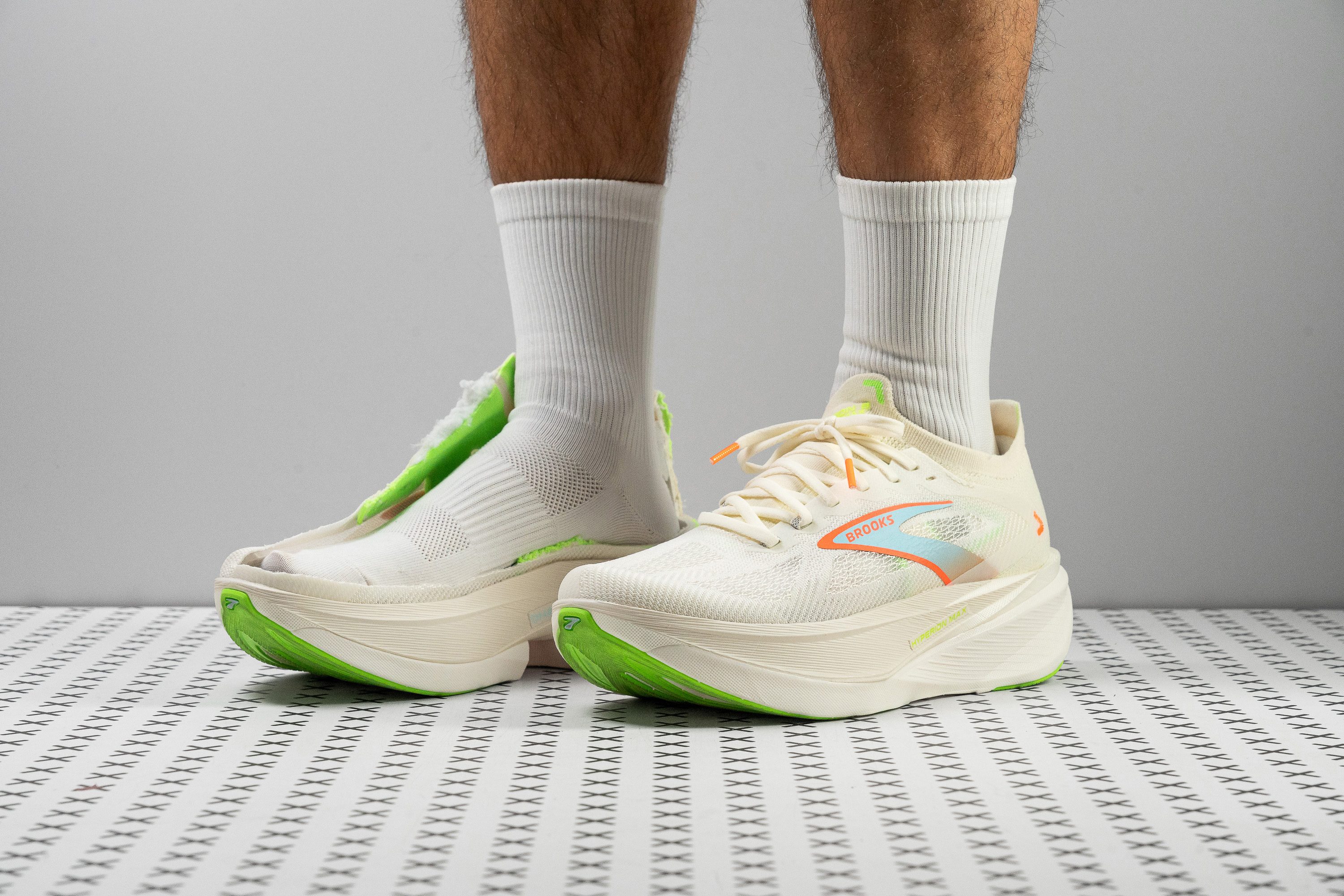Our verdict
- Top pick in best Brooks running shoes
Pros
- Excellent shock absorption
- Improved energy return with DNA Gold foam
- Massive stack height
- Impressive knit upper
- Ideal for long runs
- High-quality materials
- Leapfrogs over previous Hyperion Max models
- Avoids a bulky feel underfoot
- Can be used for daily runs too
Cons
- Slightly heavy
- Could be a bit cheaper
- Limited stability
- Drop differs from stated
Audience verdict
- Top 13% most popular running shoes
Comparison
The most similar running shoes compared
+ + Add a shoe | |||||
|---|---|---|---|---|---|
| Audience score | 79 Good! | 87 Great! | 83 Good! | 91 Superb! | |
| Price | $200 | $165 | $225 | $180 | |
| Pace | Daily runningTempo | Daily running | CompetitionTempo | Daily running | |
| Shock absorption | High | High | High | High | |
| Energy return | Moderate | Low | High | Moderate | |
| Traction | High | Moderate | High | High | |
| Arch support | Neutral | Neutral | Neutral | Neutral | |
| Weight lab Weight brand | 10 oz / 283g 9.9 oz / 281g | 10.3 oz / 293g 10.2 oz / 289g | 7.7 oz / 218g 7.9 oz / 224g | 10.3 oz / 291g 10.3 oz / 292g | |
| Lightweight | ✗ | ✗ | ✓ | ✗ | |
| Drop lab Drop brand | 10.6 mm 6.0 mm | 10.3 mm 10.0 mm | 9.9 mm 8.0 mm | 9.6 mm 8.0 mm | |
| Strike pattern | Heel | Heel | HeelMid/forefoot | HeelMid/forefoot | |
| Size | True to size | True to size | True to size | True to size | |
| Midsole softness | Soft | Soft | Soft | Soft | |
| Difference in midsole softness in cold | Small | Normal | Small | Big | |
| Toebox durability | Good | Decent | Bad | Decent | |
| Heel padding durability | Decent | Good | Good | Decent | |
| Outsole durability | Good | Good | Good | Decent | |
| Breathability | Moderate | Breathable | Moderate | Moderate | |
| Width / fit | Medium | Medium | Medium | Medium | |
| Toebox width | Medium | Medium | Medium | Medium | |
| Stiffness | Moderate | Moderate | Stiff | Stiff | |
| Torsional rigidity | Stiff | Stiff | Stiff | Stiff | |
| Heel counter stiffness | Moderate | Moderate | Moderate | Moderate | |
| Rocker | ✓ | ✗ | ✓ | ✓ | |
| Heel lab Heel brand | 45.6 mm 46.0 mm | 38.5 mm 38.0 mm | 45.1 mm 45.0 mm | 42.9 mm 47.0 mm | |
| Forefoot lab Forefoot brand | 35.0 mm 40.0 mm | 28.2 mm 28.0 mm | 35.2 mm 37.0 mm | 33.3 mm 39.0 mm | |
| Widths available | Normal | NormalWideX-Wide | NormalWide | Normal | |
| Orthotic friendly | ✓ | ✓ | ✓ | ✓ | |
| Season | All seasons | SummerAll seasons | All seasons | All seasons | |
| Removable insole | ✓ | ✓ | ✓ | ✓ | |
| Ranking | #315 Bottom 14% | #169 Top 46% | #265 Bottom 28% | #31 Top 9% | |
| Popularity | #46 Top 13% | #12 Top 4% | #48 Top 13% | #136 Top 37% |
Who should buy
After testing the Brooks Hyperion Max 3 in the lab and on the road, we concluded that:
- This is the true max-stack shoe Brooks fans have been waiting for. Forget the Ghost Max 3 too, this one’s on another level.
- It’s ideal for runners seeking massive cushioning underfoot without the bulky feel of an overly wide shoe.
- Those who love the snug, sock-like fit of a knit upper should grab this supertrainer immediately.
- Brooks fans disappointed by the previous Hyperion Max models will love how much more responsive this version feels thanks to the new DNA Gold foam.

Who should NOT buy
We think that the Hyperion Max 3 might not be the best choice for runners sensitive to weight. We found it slightly heavy compared to other supertrainers, which limits its appeal for those chasing a lighter ride. If that’s you, we recommend the ASICS Megablast if budget is not an issue, or the Adidas Adizero EVO SL as a more wallet-friendly alternative.
Additionally, we found that the stack height may simply be too much for many runners. From our perspective, not everyone needs such a sky-high build and could be even detrimental. For those preferring a more balanced feel, the Saucony Endorphin Speed 5 is a far better deal.
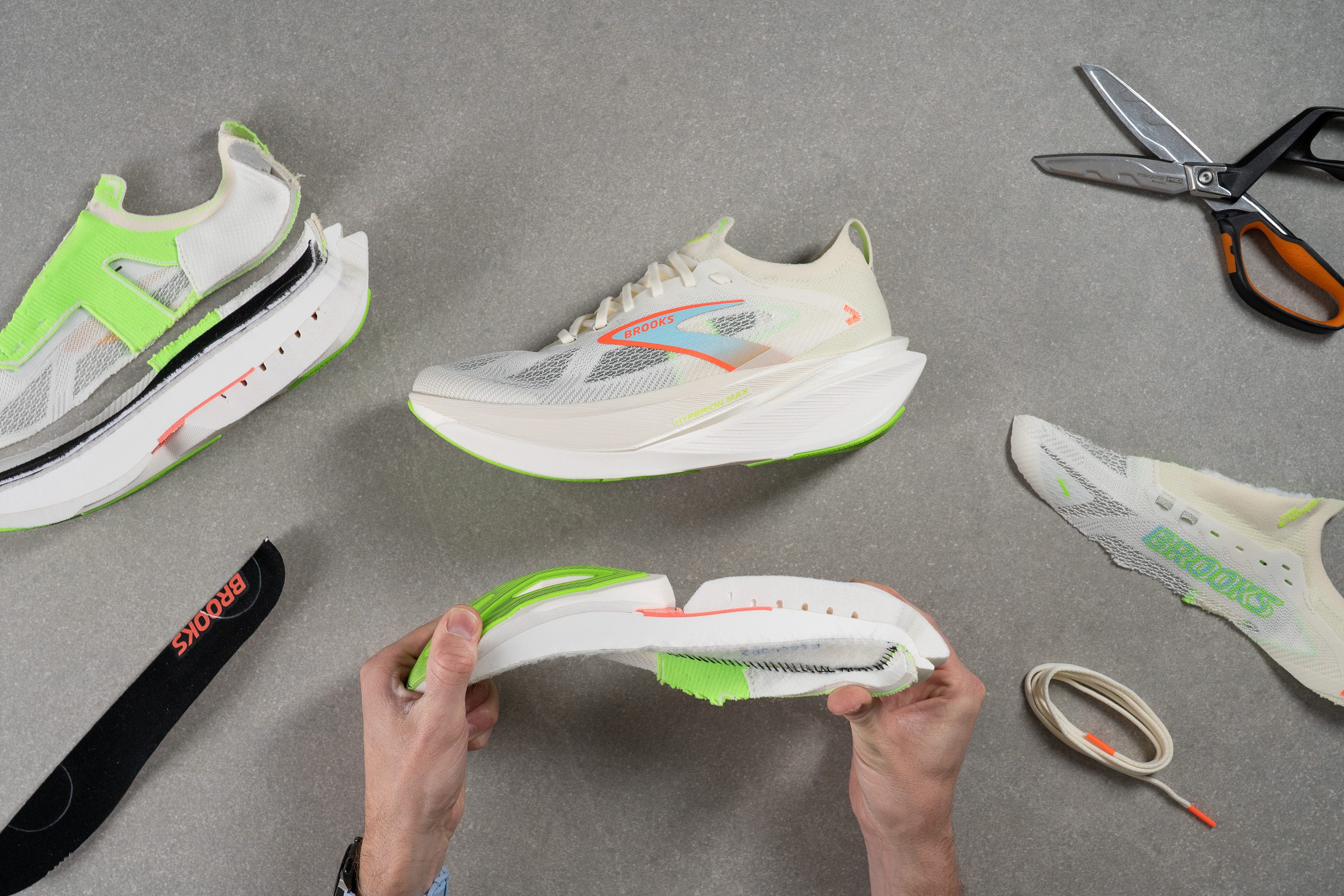
Cushioning
Shock absorption
Brooks has completely overhauled the Hyperion Max series, and we’re glad they did. It finally delivers the shock absorption worthy of a true max-cushioned shoe, far surpassing the disappointing results of the Hyperion Max 2, which measured 130 SA in the heel and 106 SA in the forefoot.
This update hits 151 SA and 133 SA respectively, confirming that after three iterations, this shoe finally earns the "Max" name.
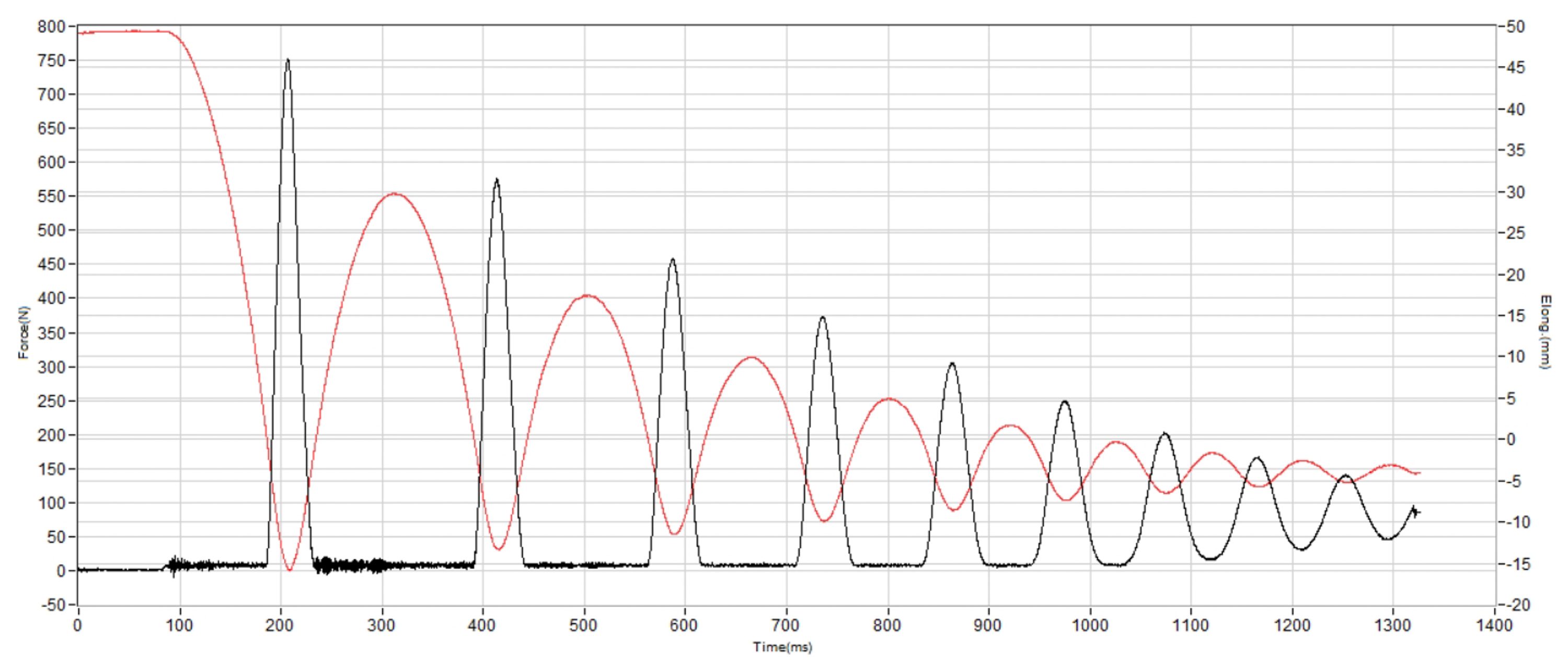
| Hyperion Max 3 | 151 SA |
| Average | 129 SA |
Energy return
Energy return has also improved noticeably, a change that was desperately needed for the Hyperion Max 3 to join the true supertrainer category. After we tested it, the results were clear: the new PEBA-based DNA Gold foam, used in the top layer, enhances energy return.
We measured a bounce of 63.9% in the heel and 66.2% in the forefoot. These numbers may not be record-breaking, but they’re good enough to make this shoe a reliable, long-distance powerhouse.
| Hyperion Max 3 | 63.9% |
| Average | 58.5% |
Heel stack
Another must-have feature for any shoe worthy of the supertrainer title is a truly maximalist stack height. Version 2 fell disappointingly short with just 33.2 mm, a result that was even embarrasing. However, Brooks completely turned things around this time, going all-in with a massive 45.6 mm setup.
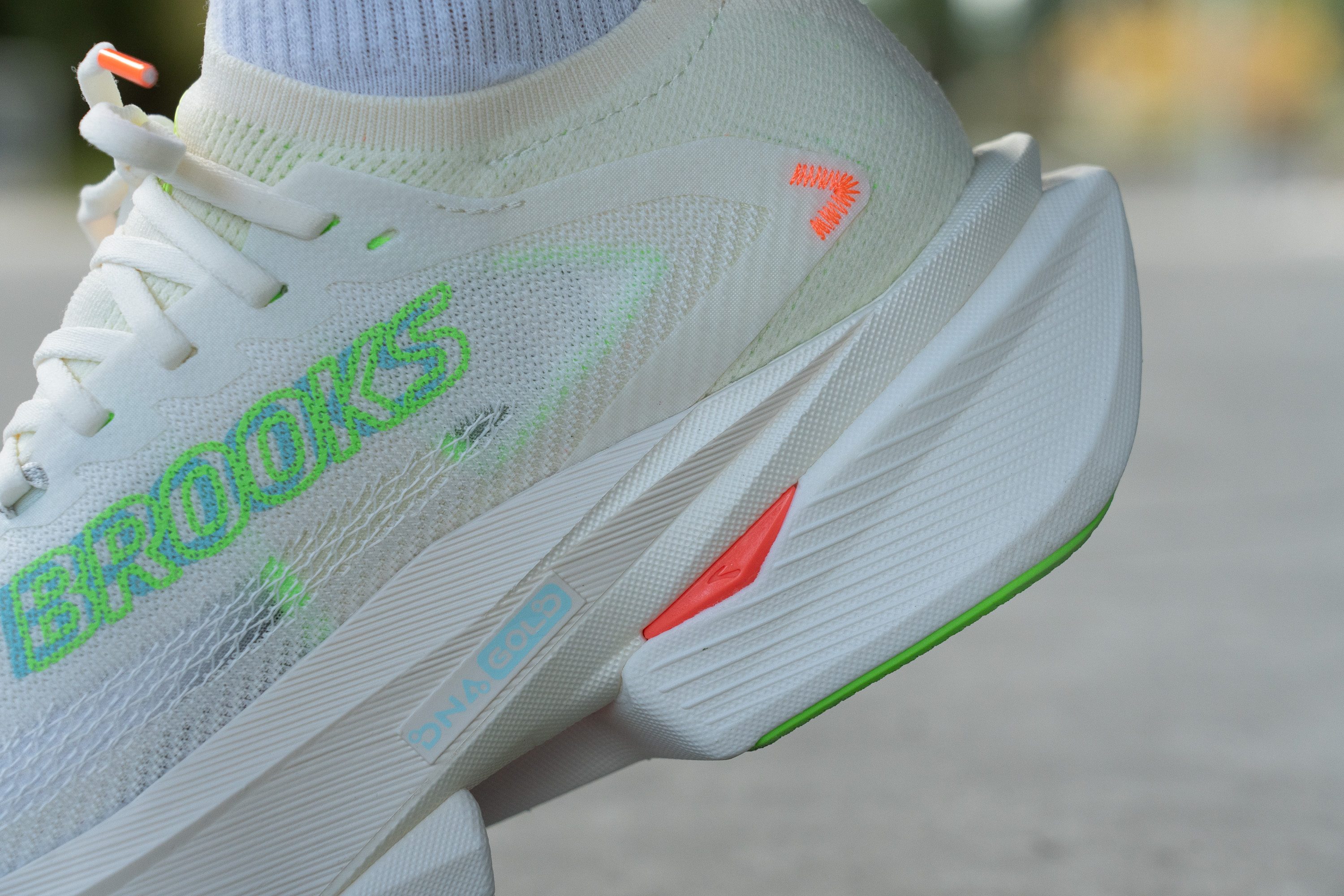
This towering, cushion-rich design makes the Hyperion Max 3 a dream for runners chasing bottomless comfort. We found it especially suited for heavier athletes or those doing marathon training who crave endless heel protection.
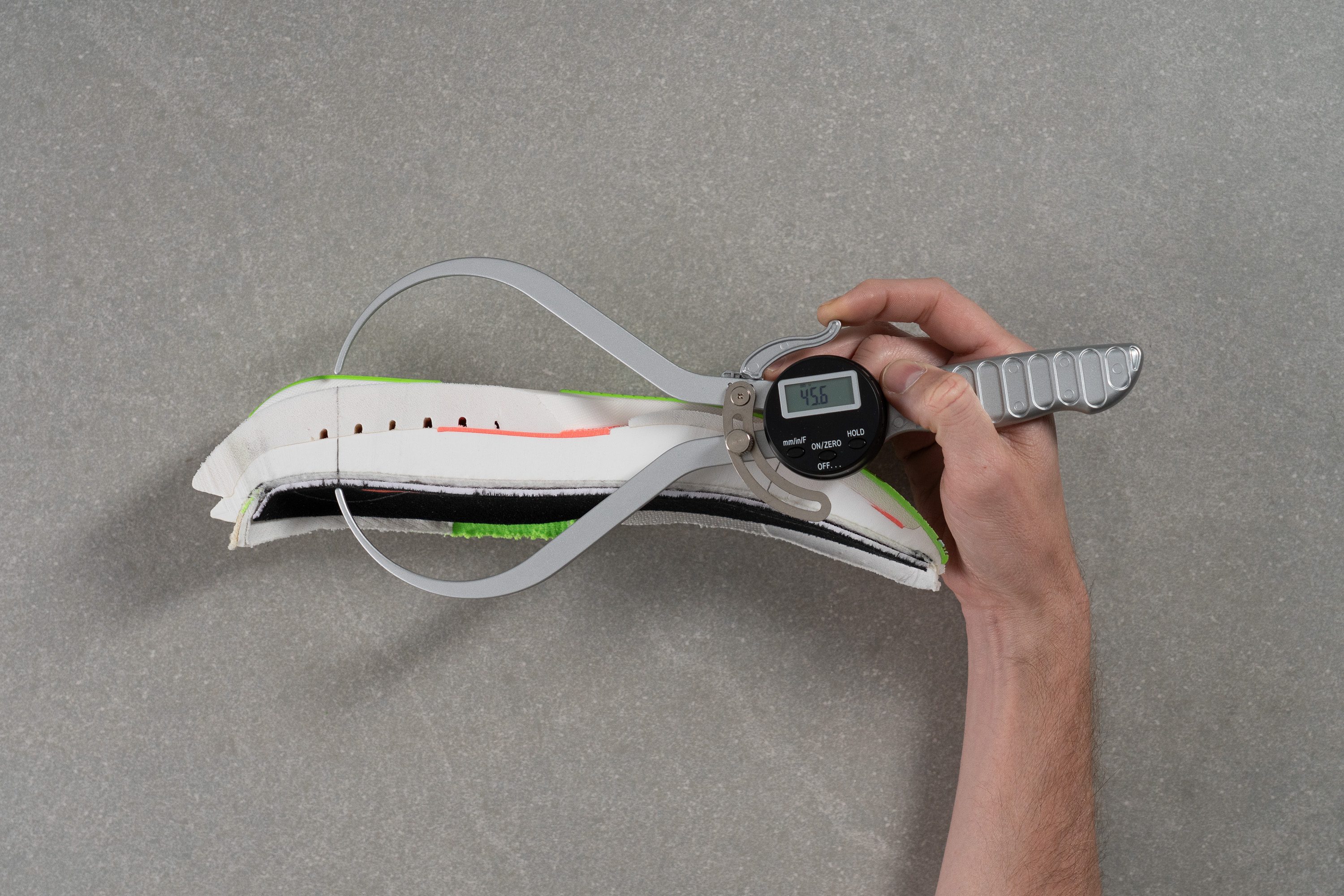
| Hyperion Max 3 | 45.6 mm |
| Average | 34.8 mm |
Forefoot stack
If the heel already caught your attention, wait until you see the forefoot. Here, the Hyperion Max 3 reaches 35.0 mm, a figure that's very similar to our current lab average for heel stacks and even surpasses the heel height of the Hyperion Max 2.
With this sky-high setup, we discovered that the Hyperion Max 3 is a true comfort-driven powerhouse. Whether that suits you or not will depend heavily on your personal running style and what you’re looking for in a shoe.
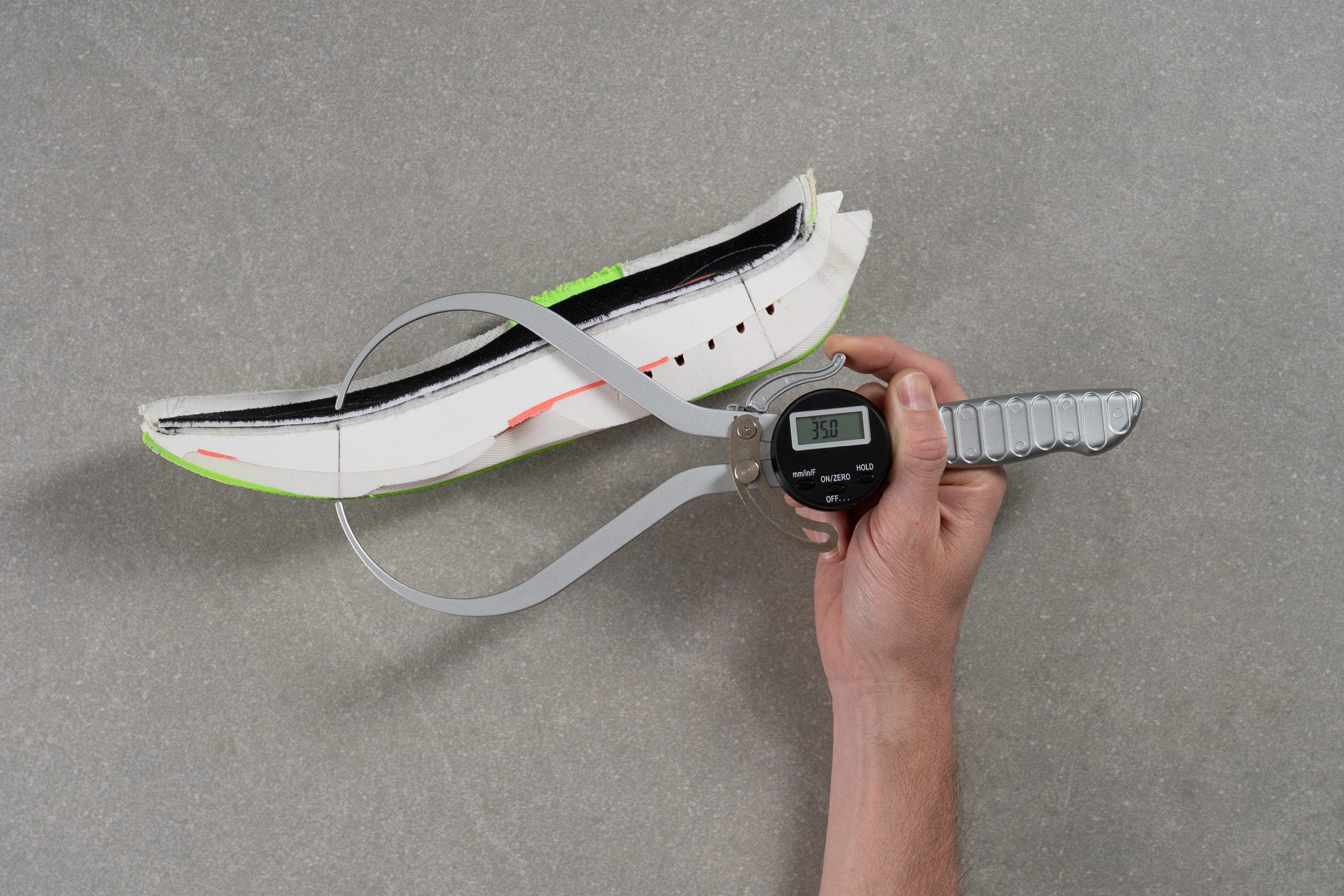
| Hyperion Max 3 | 35.0 mm |
| Average | 26.2 mm |
Drop
Brooks advertises a 6 mm drop for this shoe, but our measurements revealed a much steeper 10.6 mm. On the run, it also feels higher than stated, yet we found it works well for all footstrikes thanks to its geometry and towering stack.
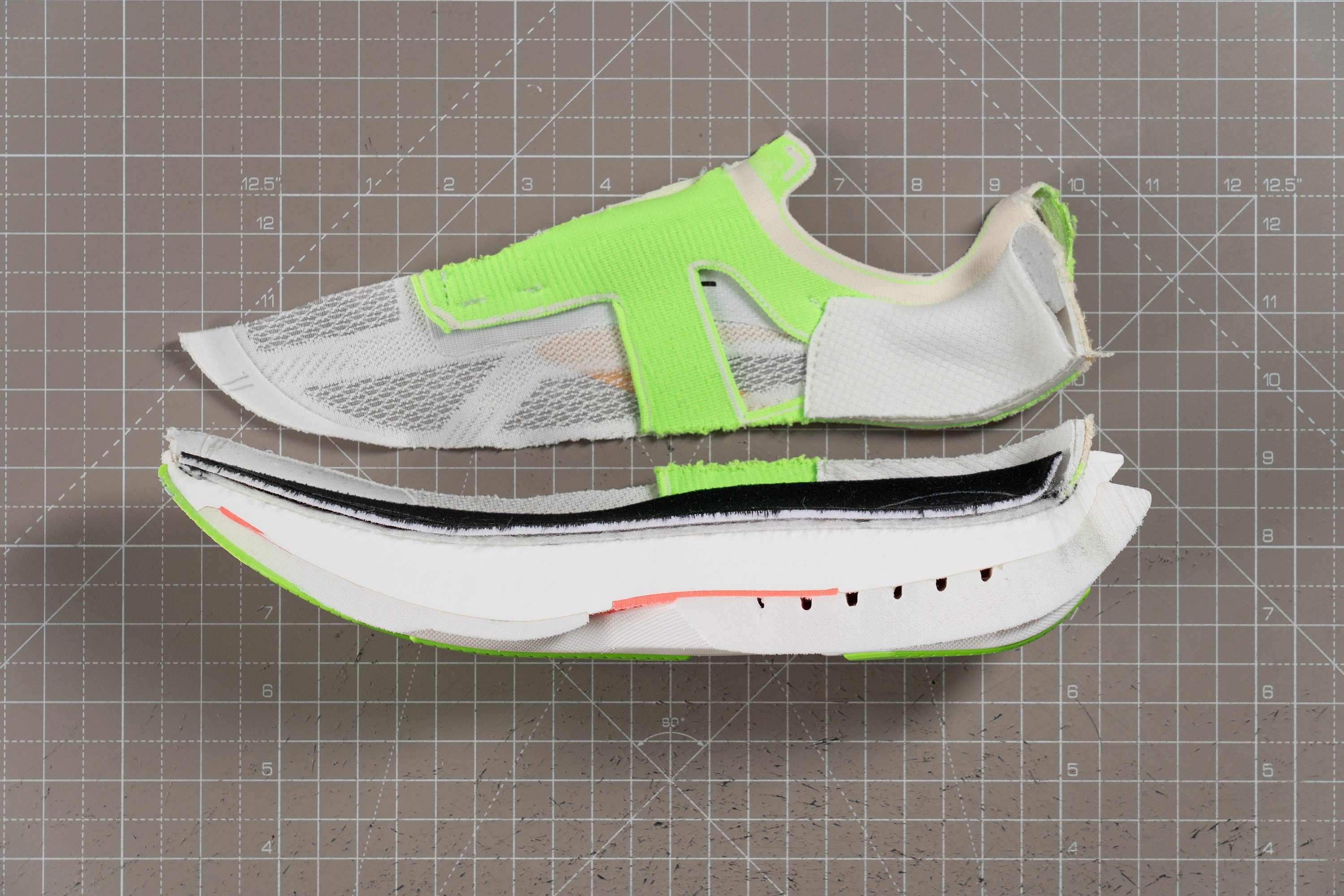
| Hyperion Max 3 | 10.6 mm |
| Average | 8.6 mm |
Midsole softness
After relying on EVA foams for far too long, Brooks finally caught up with the competition and introduced its PEBA-based DNA Gold foam, first featured in the Hyperion Elite 4 PB and after that, in their excellent Hyperion Elite 5 supershoe.
Now, DNA Gold is slowly making its way into training models, though availability remains limited. Fortunately, the Hyperion Max 3 benefits from this ultra-bouncy, plush foam in the top layer which we found remarkably responsive and cushioned, especially for midfoot and forefoot runners. Our durometer registered only 12.1 HA, validating the soft feel that we got during our runs.
It felt almost surreal that such a major brand that's responsible for some of the world’s best-selling shoes had gone this long without a superfoam. But at last, Brooks is speaking the same performance-focused language as the top dogs out there.

| Hyperion Max 3 | 12.1 HA |
| Average | 20.4 HA |
Secondary foam softness
The secondary layer beneath the nylon plate is the familiar DNA Flash v2 foam, which previously filled the entire midsole of this model and older Brooks racers like the Hyperion Elite 4—a shoe that never quite qualified as a true supershoe.
This foam is noticeably firmer at 22.9 HA, serving mainly to enhance stability and durability. And while we would have loved an all-DNA Gold Hyperion Max 3, that’s not on the table for now.
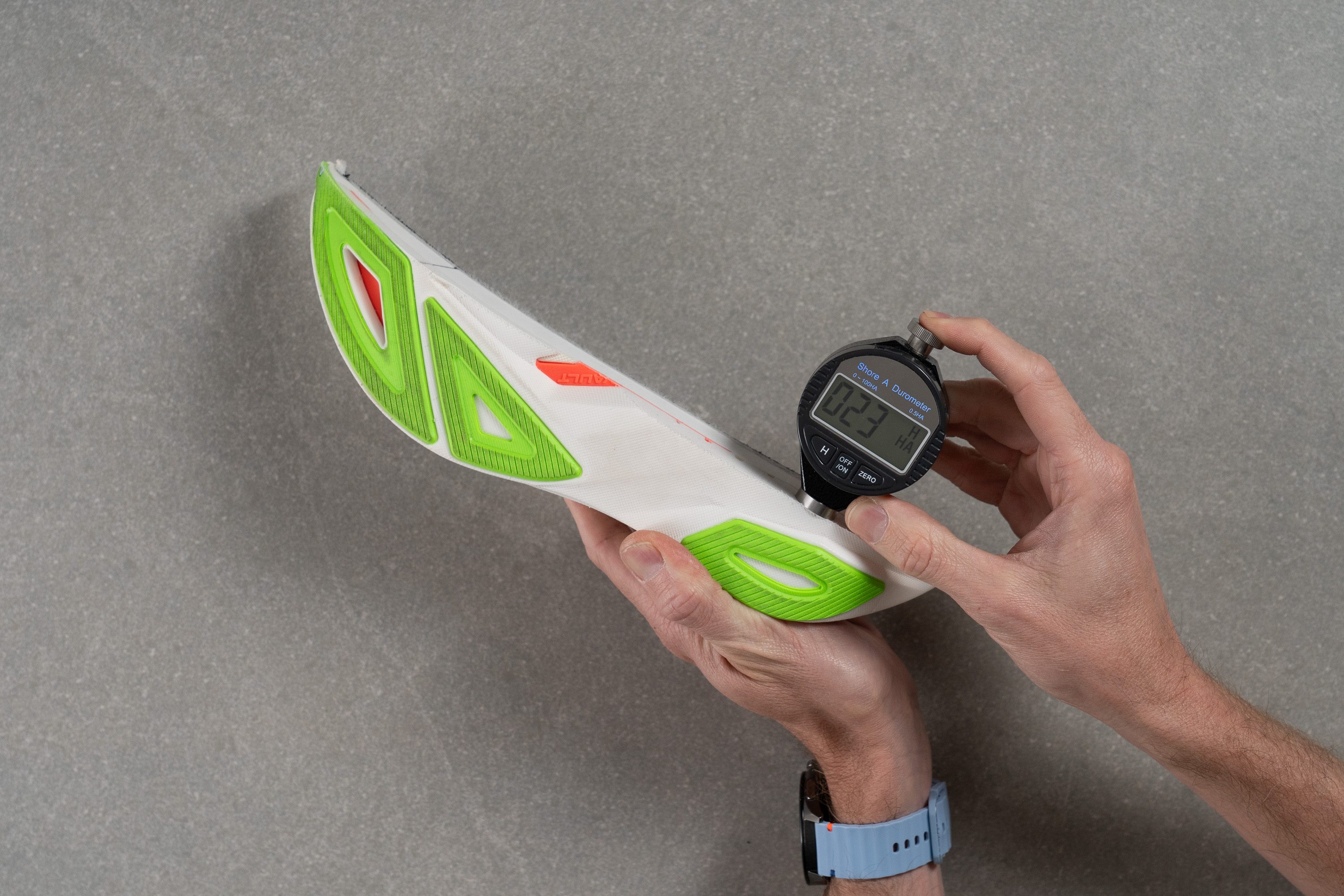
| Hyperion Max 3 | 22.9 HA |
| Average | 22.7 HA |
Rocker
Brooks clearly loves giving cool names to its design elements, and the rocker of this shoe gets one too: RapidRoll. The concept behind the name is clear, to keep runners rolling forward without sinking into the heel.
We found that it works exceptionally well for runners who enjoy a strong rolling sensation, thanks to its aggressive forefoot rocker. The heel curvature is also among the most pronounced we’ve encountered.
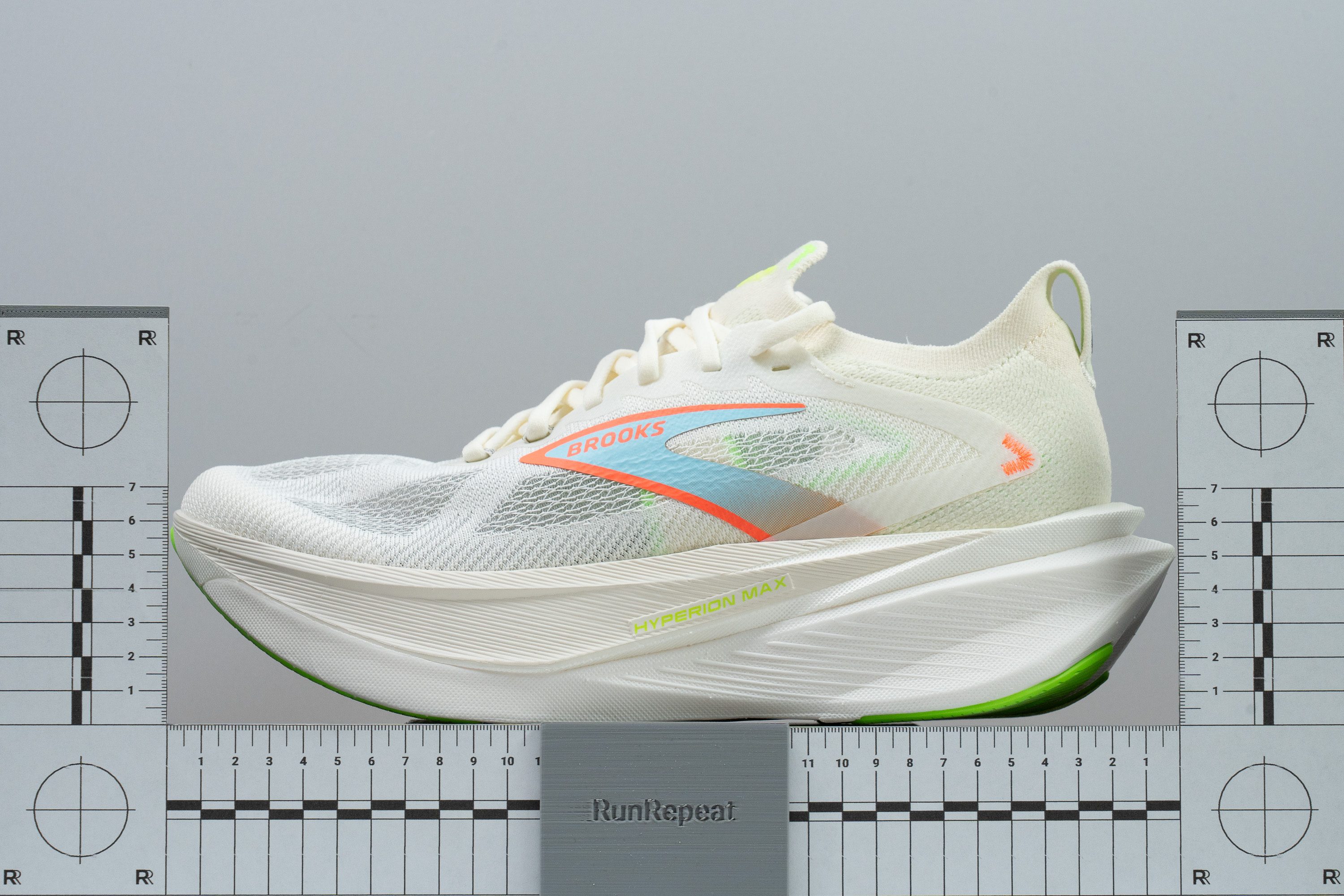
Plate
Brooks keeps the same SpeedVault plate design with some cutouts (although less sophisticated than the one we found in the Hyperion Elite 5) and spoon-like shape, but this time, they use a nylon material instead of carbon fiber.

In our view, this choice makes perfect sense for a versatile shoe that wants to handle daily runs, offering a smoother, more forgiving ride that still feels responsive underfoot.
Size and fit
Size
Width / Fit
Brooks has never been known for offering roomy fits, and the Hyperion Max 3 follows that same path. The downside here is that, unlike other Brooks models, this one is available only in a standard width.
As usual, we created a gel mold of the interior to get precise measurements, and our first reading showed 94.9 mm.
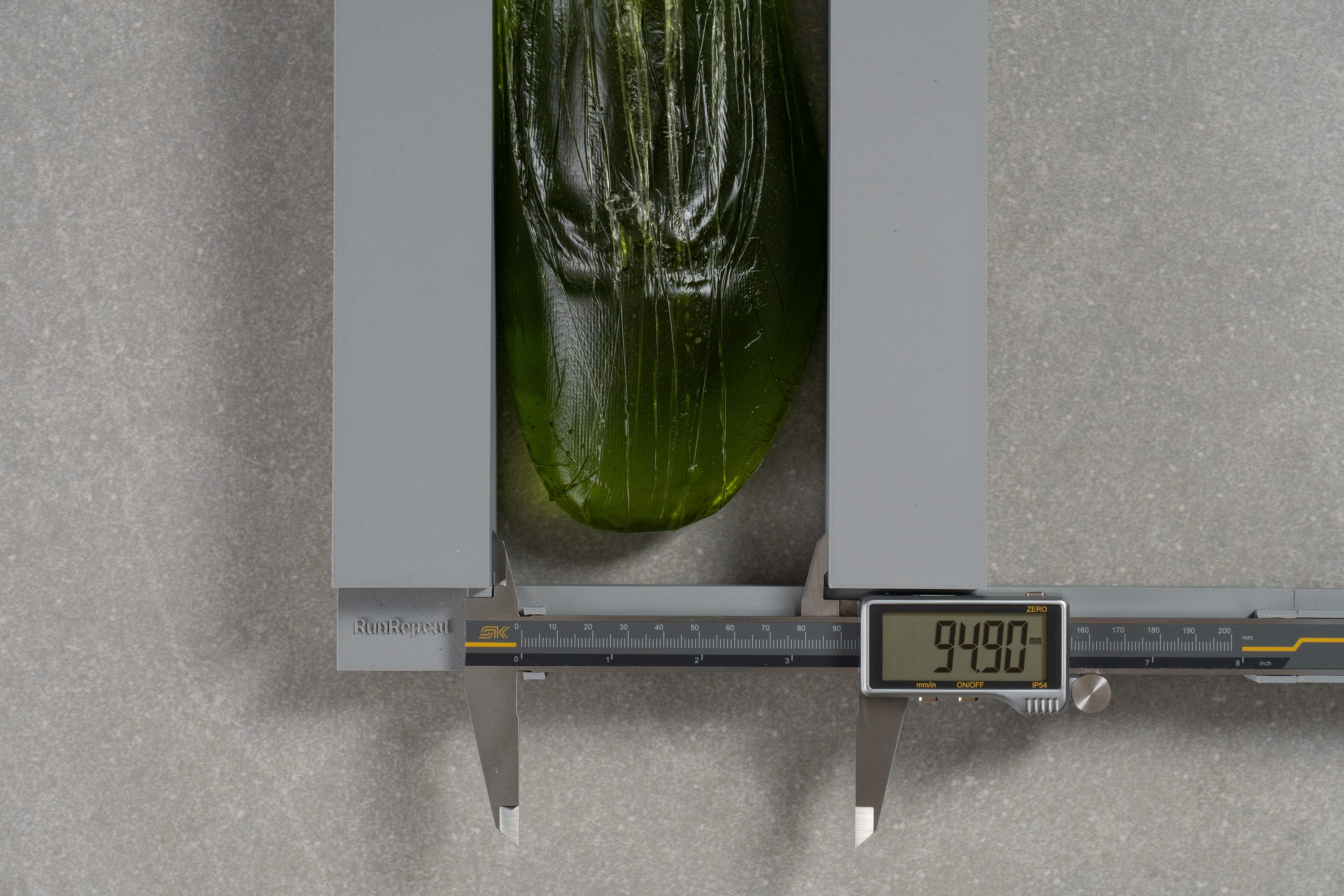
| Hyperion Max 3 | 94.9 mm |
| Average | 95.1 mm |
Toebox width
The toebox measures 72.6 mm, placing it very close to the average. This confirms that Brooks designed the shoe to suit most runners, though it may not fully accommodate those with very narrow or wide feet.
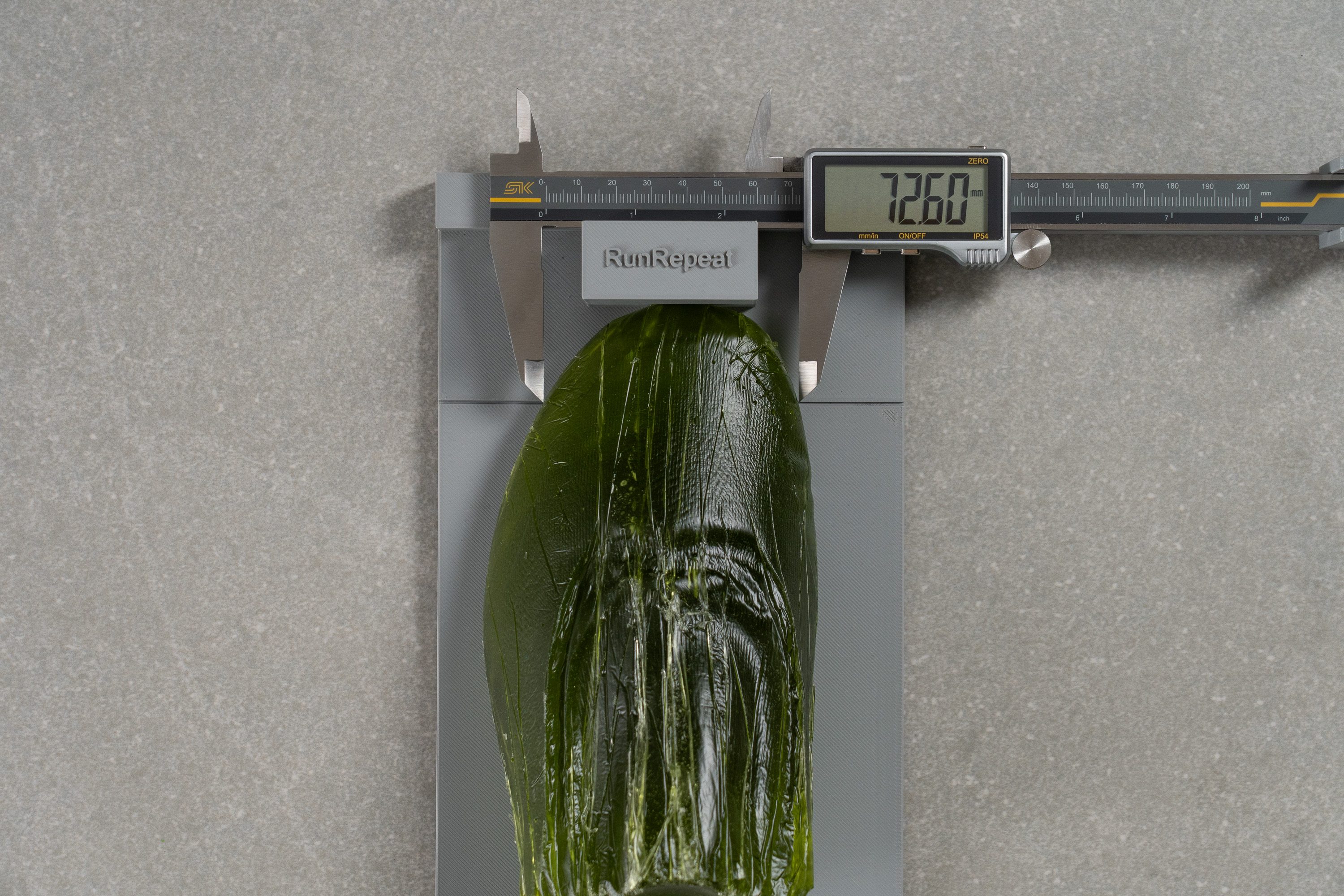
| Hyperion Max 3 | 72.6 mm |
| Average | 73.3 mm |
Toebox height
The toebox is slightly lower than average at 25.0 mm, but that’s no issue.
The knit material feels exceptionally comfortable and highly stretchable, eliminating any pressure—even during long summer runs when feet tend to swell.

| Hyperion Max 3 | 25.0 mm |
| Average | 27.1 mm |
Traction / Grip
Traction test
Scoring 0.51 in our traction test, the Hyperion Max 3 offers confident, skid-free grip in nearly all road conditions. As long as you avoid off-road surfaces, traction remains solid.
| Hyperion Max 3 | 0.51 |
| Average | 0.48 |
Outsole design
Now, let’s break down the outsole design. We discovered that it features four bright-green rubber zones surrounded by large exposed midsole areas, along with a big medial cutout for weight reduction and two smaller ones in the forefoot. We’re totally fine with that—less EVA foam and less weight are always welcome, although you'll catch some small rocks, guaranteed.
This type of cutout isn’t new in running shoes; it became well known after Adidas introduced it in the Adios Pro line. While some runners dislike the feel, we think it’s a smart choice here, as the Hyperion Max 3 really benefits from every gram saved.
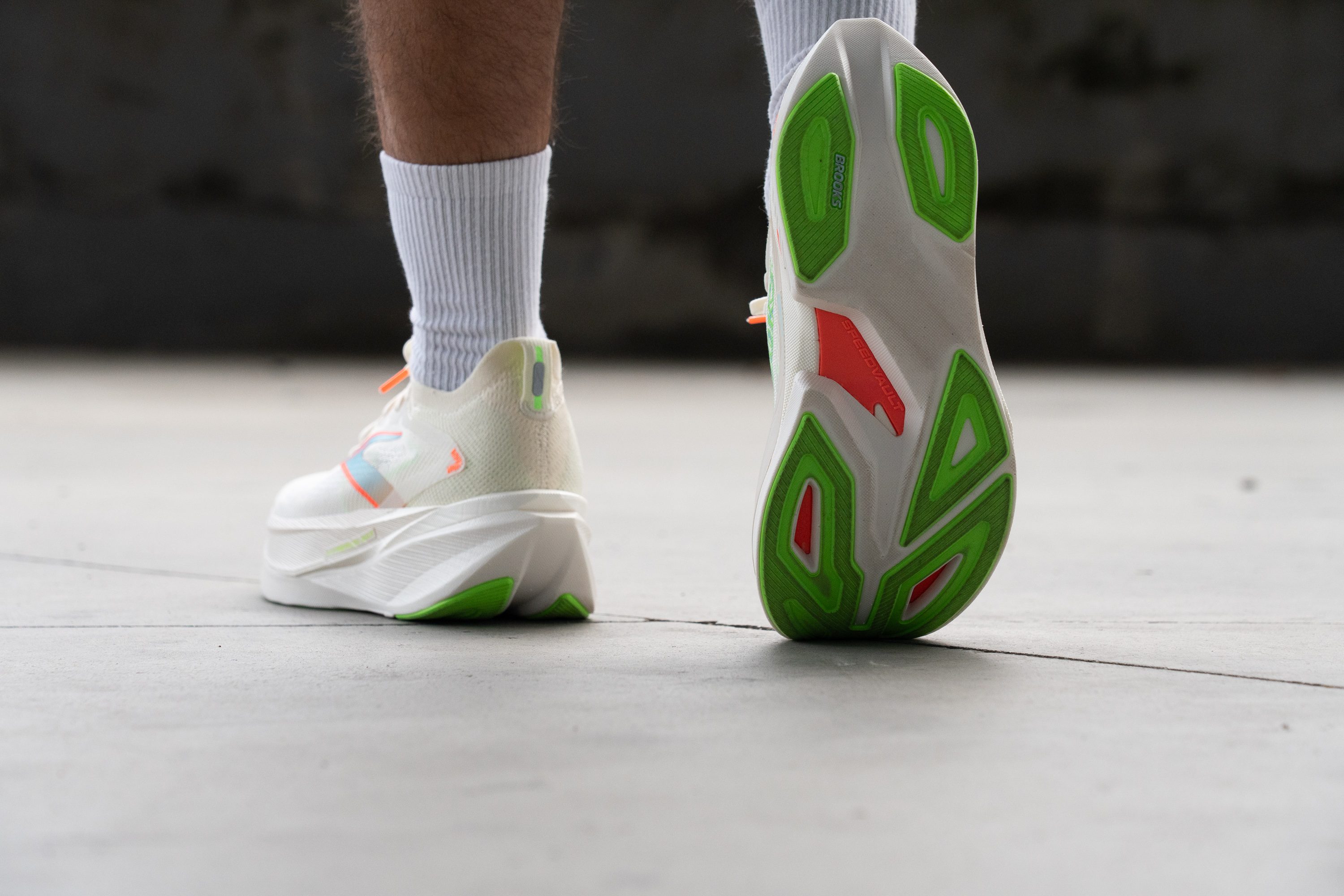
Flexibility / Stiffness
The combination of a large midsole cutout and a nylon plate instead of a carbon-fiber one is what enables the 17.0N result in our bend test. Without these choices, the shoe’s massive stack height would have easily pushed it beyond 20N.

| Hyperion Max 3 | 17.0N |
| Average | 15.3N |
Weight
While the Hyperion Max 3 has made some impressive leaps over its predecessor, there’s one downgrade: weight. We registered 10.0 oz or 283g.
We’re honestly not surprised for two main reasons. First, we know that Brooks’ Hyperion Elite 5 is not among the featherlight supershoes, so it's clear that DNA Gold might be slightly heavier than other high-end foams. Second, the Hyperion Max 2 had a much thinner stack, so a small weight gain feels like an unavoidable trade-off.
Still, we think Brooks could fine-tune this area by trimming the heel padding, or using a more wear-resistant rubber that allows trimming. Top-tier supertrainers are noticeably lighter, and making the Hyperion Max 3 more capable of handling faster paces would make it far more compelling.
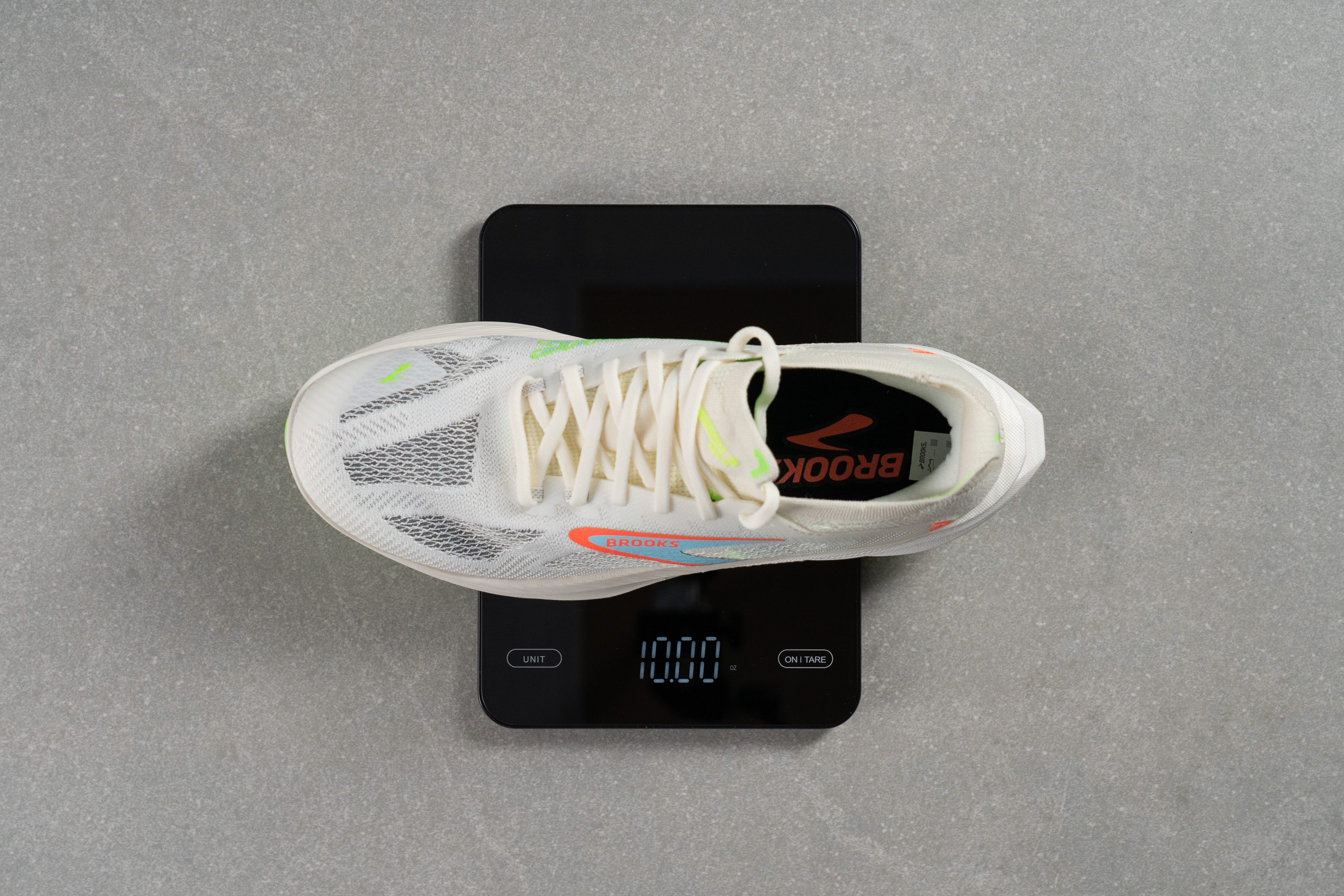
| Hyperion Max 3 | 10.0 oz (283g) |
| Average | 9.3 oz (264g) |
Breathability
While Brooks may have felt a bit behind in recent years, now that they’ve caught up with the foam game, there’s one area where they’ve actually been leading all along: the upper.
The Hyperion Max 3 clearly benefits from the expertise gained in developing the Elite series and the StealthFit lineup, resulting in a similar design here with excellent ventilation that we rated 4/5.
What truly sets this upper apart is how Brooks adjusted the knit density according to each zone’s purpose. The toebox uses nearly transparent mesh sections for airflow, while the midfoot and heel feature thicker zones to enhance stability and durability.

From a materials standpoint, this knit construction is genuinely outstanding.
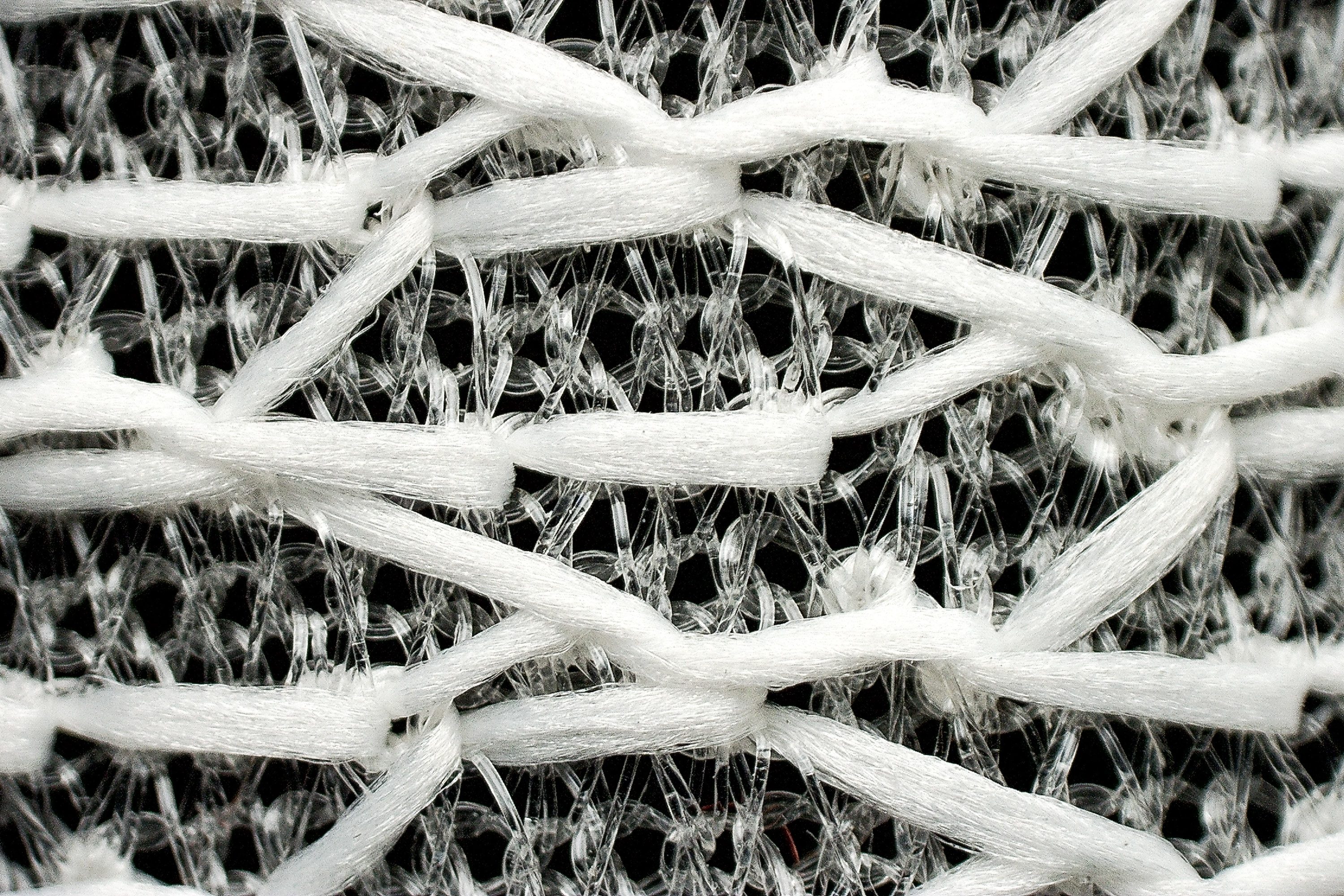
Under our digital microscope, very few uppers have impressed us this much. In fact, we often find the opposite, with some supertrainers using a similar fabric to entry-level trainers.
For us, the upper is the standout feature of the Hyperion Max 3. It blends plush comfort with race-ready precision, perfectly capturing the essence of a premium shoe.
| Hyperion Max 3 | 4 |
| Average | 3.7 |
Stability
Lateral stability test
There are two types of supertrainers: those built with ultra-wide midsoles for added stability and those that keep their shape compact to feel more agile, even if that means sacrificing support. We discovered that the Brooks Hyperion Max 3 clearly falls into the latter category, offering a daily-trainer width but with a much taller platform.
Because of that, we only recommend it for runners with a neutral gait, and it’s definitely not suited for those who need extra stability. If that’s your case and you’re after a max-stack option, the ASICS Superblast 2 is a far better choice.
Torsional rigidity
Torsional rigidity is as high as it gets, earning a 5/5 in our test thanks to the ultra-thick midsole.
| Hyperion Max 3 | 5 |
| Average | 3.5 |
Heel counter stiffness
On the flip side, the heel counter feels just as flexible—if not more—than other Brooks models, scoring only 3/5. Thanks to the generous foam padding, it’s among the most comfortable we’ve tested recently, yet it clearly confirms that this shoe prioritizes comfort over support.
| Hyperion Max 3 | 3 |
| Average | 2.9 |
Midsole width - forefoot
For some runners, the biggest issue with many supertrainers is their oversized feel. Sure, they need height to earn that title, but there’s no rule about width. And it's fair to say that compact, less bulky options are rare, with the Nike Zoom Fly 6 leading so far.
We discovered that Brooks aims to challenge that with the Hyperion Max 3, offering average width and an agile ride. In our lab measurement, we recorded 115.4 mm in the forefoot.
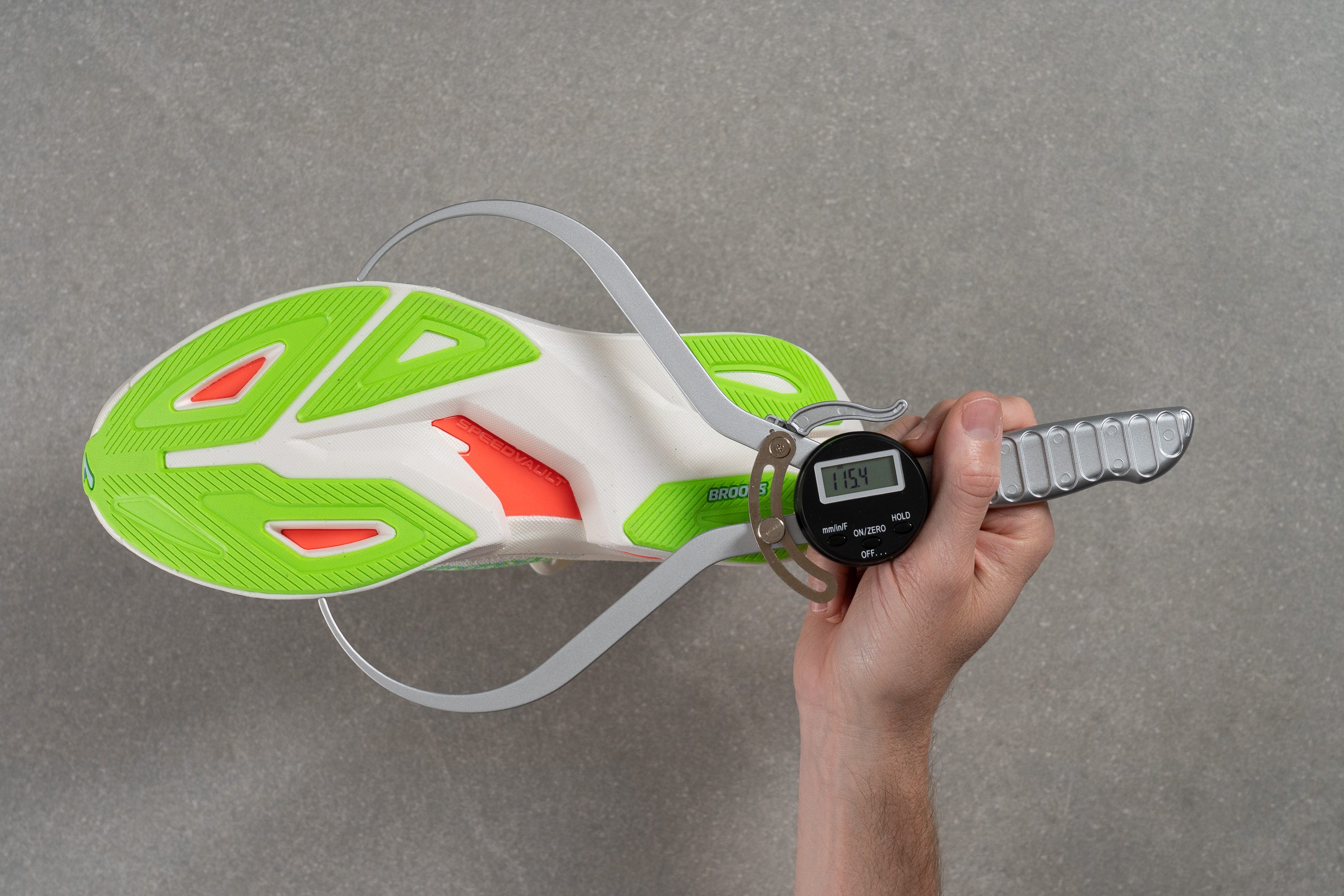
| Hyperion Max 3 | 115.4 mm |
| Average | 114.4 mm |
Midsole width - heel
The heel is noticeably narrower than average at 87.0 mm. We appreciate that they’re breaking from convention, it’s exactly the right move for a late arrival to the supertrainer game.

| Hyperion Max 3 | 87.0 mm |
| Average | 90.7 mm |
Durability
Toebox durability
The upper is truly exceptional in every aspect: it feels amazing to the touch, looks fantastic, and even proved durable by scoring 4/5 in our test. Brooks smartly reinforced key areas, like the spot where your big toenail might cause wear.
| Hyperion Max 3 | 4 |
| Average | 2.6 |
Heel padding durability
The heel padding is incredibly comfortable and showed decent durability with a 3/5 score. It's just enough to keep us from worrying, though we believe there’s still room for a small upgrade.
| Hyperion Max 3 | 3 |
| Average | 3.4 |
Outsole durability
We were pleased to see the Hyperion Max 3 finish our outsole durability test with just 0.9 mm of wear. It’s not groundbreaking, but definitely reassuring and enough to move on without any concern.
| Hyperion Max 3 | 0.9 mm |
| Average | 1.1 mm |
Outsole thickness
The outsole includes a solid 2.8 mm of rubber to handle normal wear, and we don’t expect any early issues. Still, with plenty of exposed foam, it’s best to avoid gravel or rough terrain.
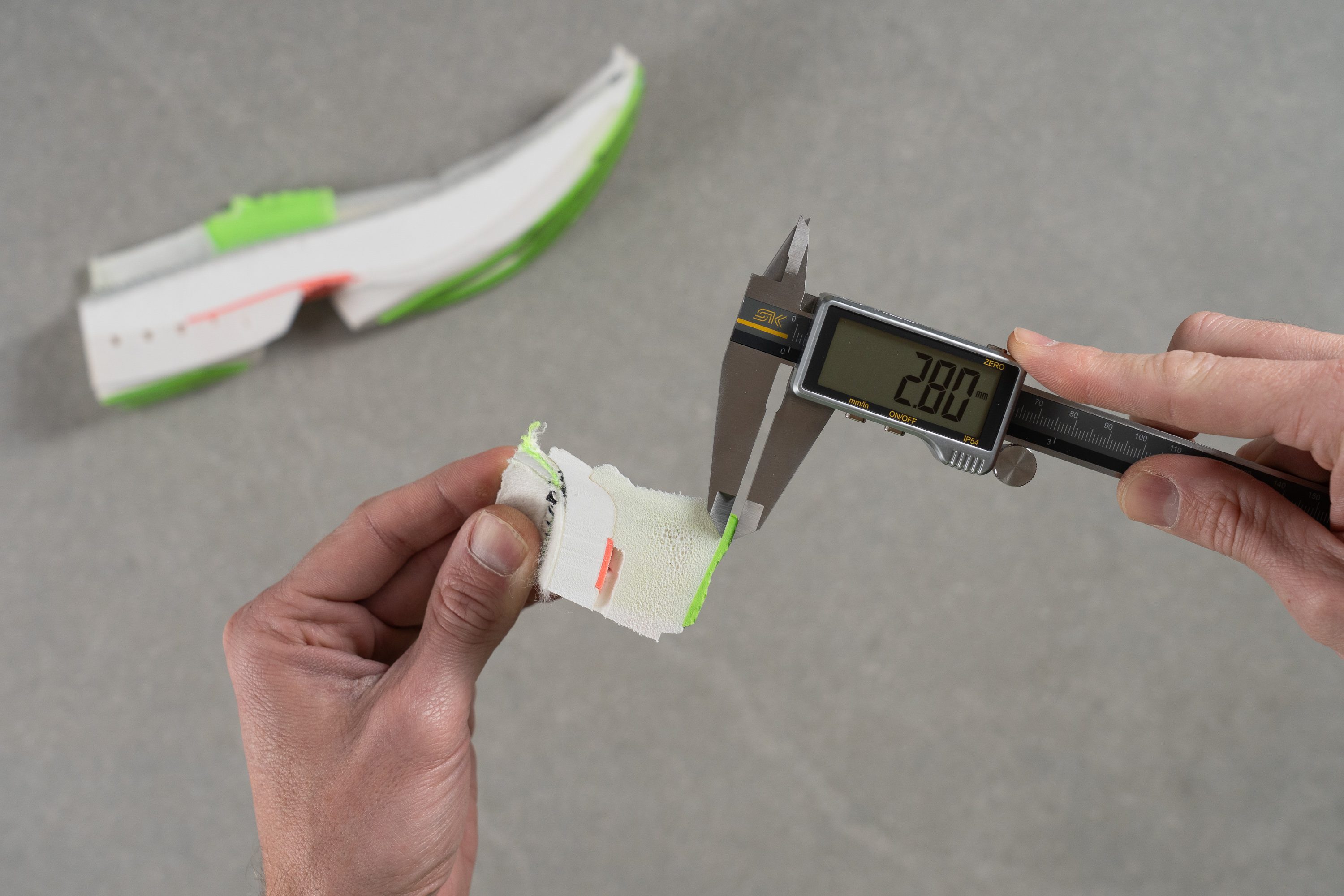
| Hyperion Max 3 | 2.8 mm |
| Average | 3.2 mm |
Misc
Insole thickness
The stock insole is remarkably thin at just 2.8 mm, which suggests that Brooks prioritized maximizing midsole foam. We believe this approach will become a trend very soon, as many brands still rely on cheap insoles that reduce energy return, even in performance-oriented models.
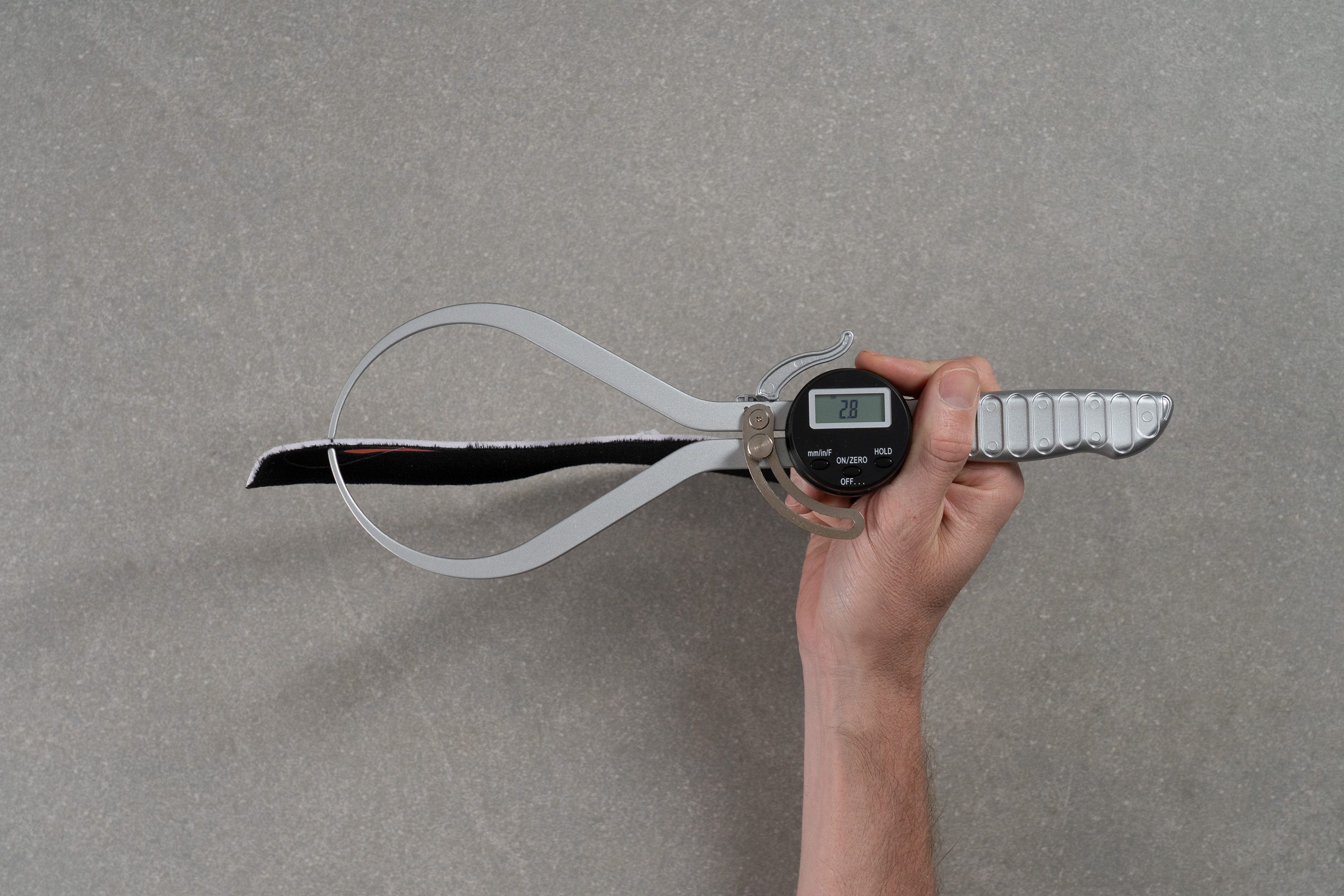
| Hyperion Max 3 | 2.8 mm |
| Average | 4.5 mm |
Removable insole
The stock insole is removable and can be swapped for a third-party option, though its thin design limits compatibility if you want to maintain enough room in the toebox.
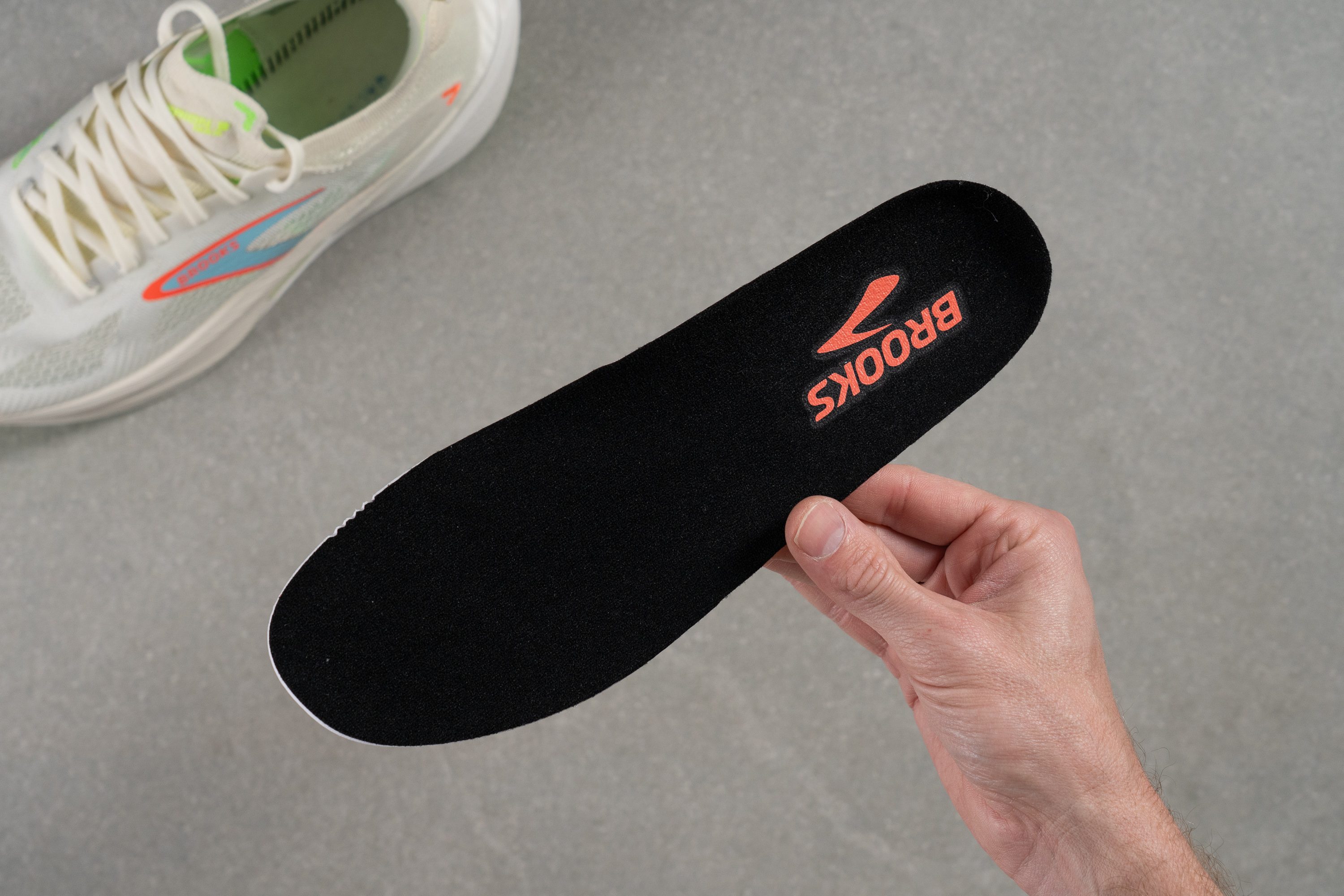
| Hyperion Max 3 | Yes |
Midsole softness in cold (%)
The DNA Gold foam performed well in cold conditions, becoming only 17% firmer after 20 minutes in the freezer.
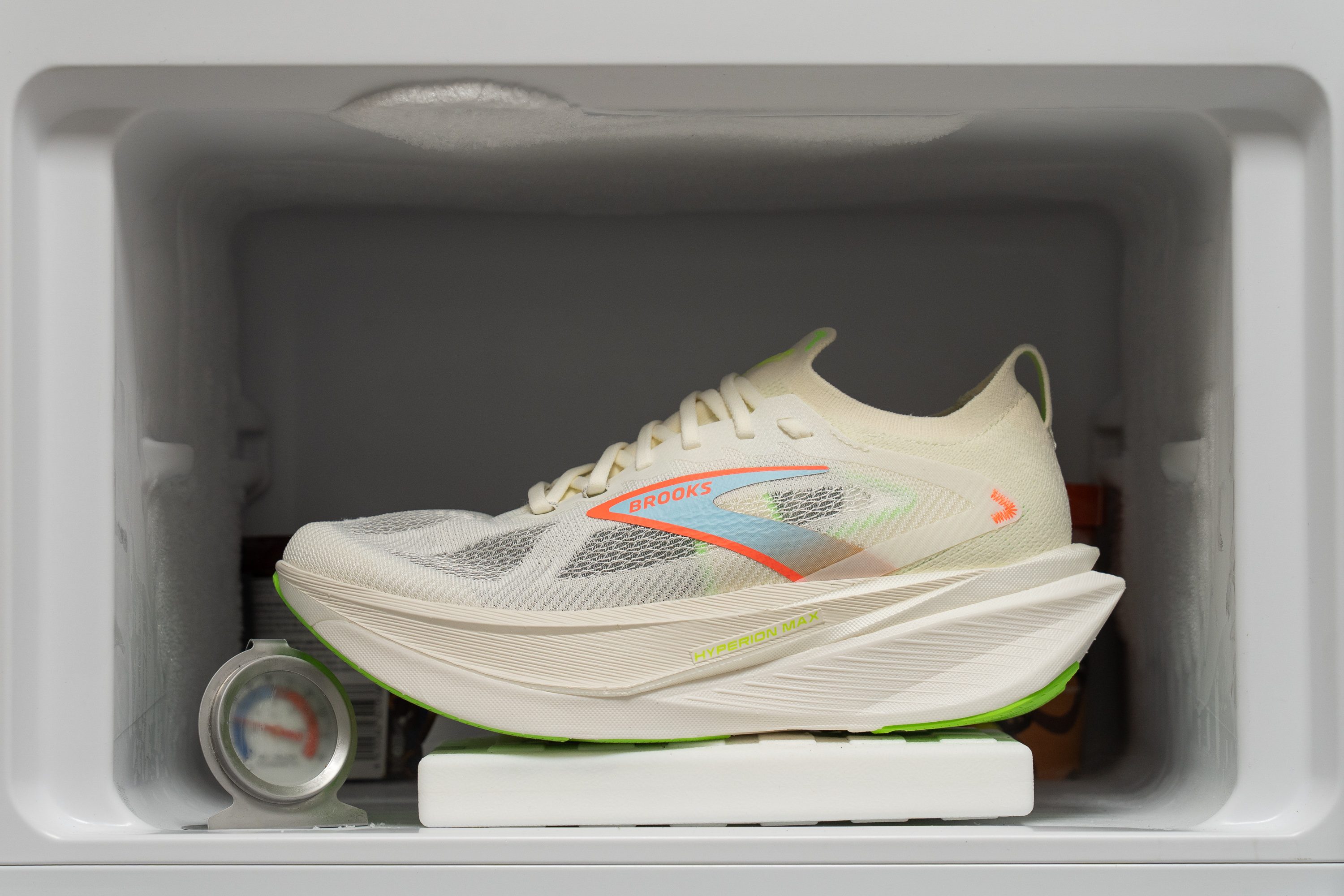
| Hyperion Max 3 | 17% |
| Average | 24% |
Reflective elements
A nice detail from Brooks here, as we discovered subtle reflective elements on the heel that enhance visibility during low-light runs.
| Hyperion Max 3 | Yes |
Tongue padding
The asymmetrical tongue design of the Hyperion Max 3 is far from conventional, but we absolutely loved it. However, it’s not for everyone—runners who enjoy plush, thick tongues may find it lacking, as it offers only 1.8 mm of padding.
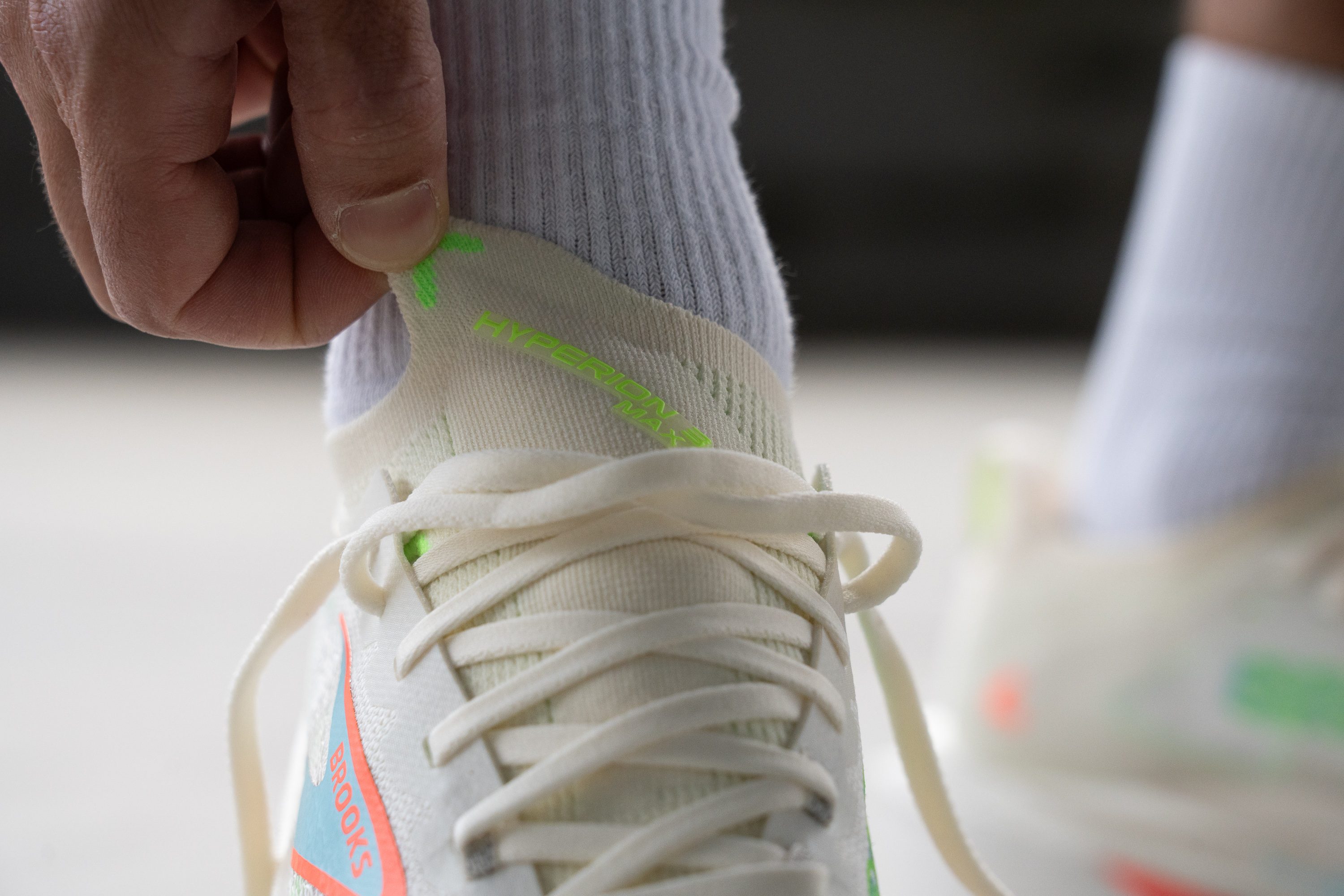
Lockdown is excellent, delivering a secure fit at both slow and fast paces, which we expected from a knit-based design. It fits similarly to the Nike Alphafly 3 but feels more comfortable thanks to its softly-padded, thicker upper.
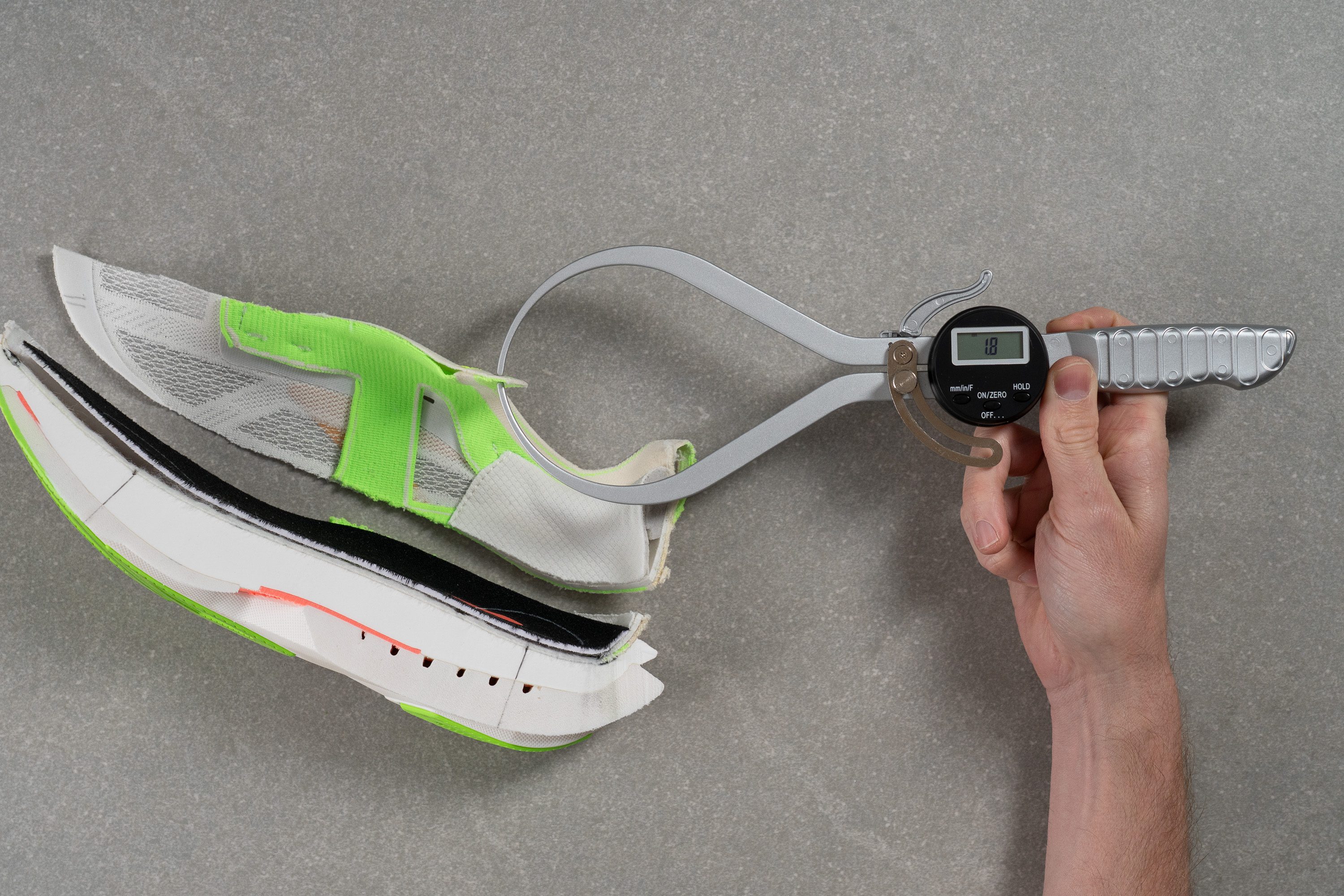
| Hyperion Max 3 | 1.8 mm |
| Average | 5.8 mm |
Tongue: gusset type
Brooks opted for a semi-gusseted setup combined with a sock-like collar, an absolute treat for runners who enjoy a secure, stay-put fit that never shifts. It feels simply amazing and it's one of the best features of this shoe.

| Hyperion Max 3 | Both sides (semi) |
Price
In our view, the Brooks Hyperion Max 3 is reasonably priced, though slightly higher than we’d expect. We believe that launching it at a slightly lower price could’ve helped attract hesitant buyers who still don’t trust Brooks when it comes to performance.
For instance, the ASICS Sonicblast comes cheaper, offers greater energy return, and delivers superior grip on its outsole.
| Hyperion Max 3 | $200 |
| Average | $152 |
Heel tab
The Hyperion Max 3’s heel tab is sleek yet practical, providing an easy grip for quick on-and-off. Made from soft, stretchable fabric with durable stitching, it feels sturdy and built to last.
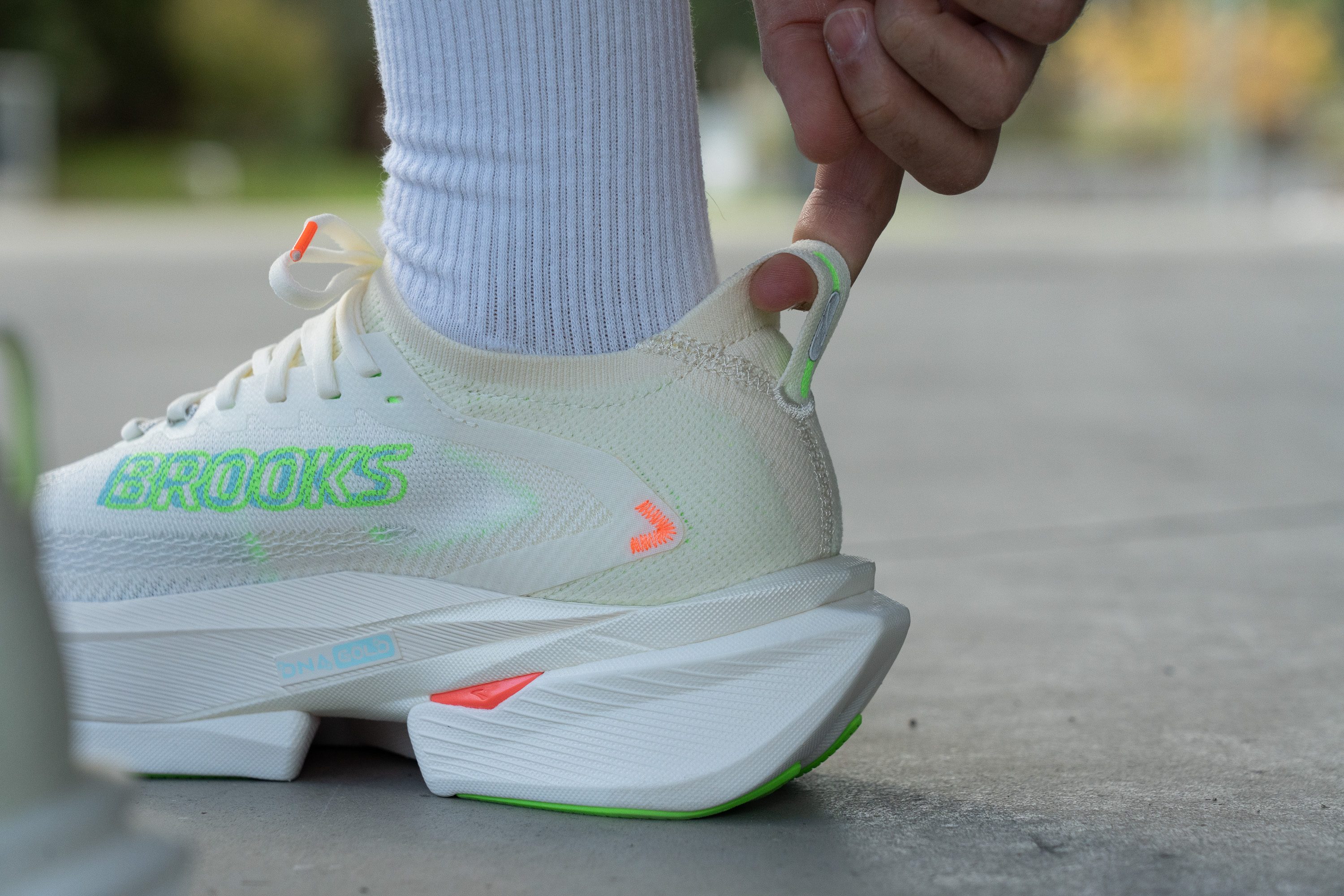
| Hyperion Max 3 | Finger loop |

